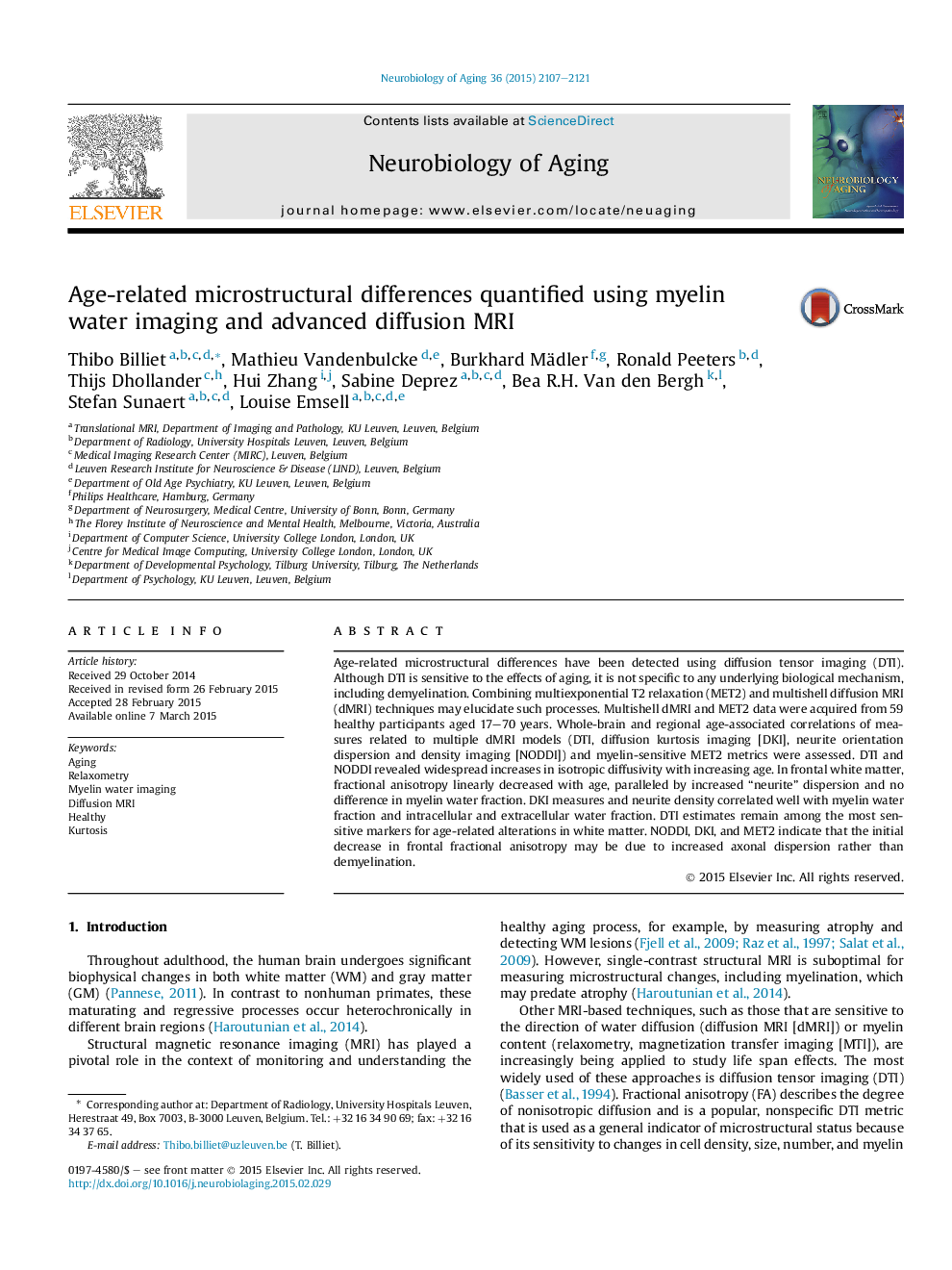| Article ID | Journal | Published Year | Pages | File Type |
|---|---|---|---|---|
| 6804241 | Neurobiology of Aging | 2015 | 15 Pages |
Abstract
Age-related microstructural differences have been detected using diffusion tensor imaging (DTI). Although DTI is sensitive to the effects of aging, it is not specific to any underlying biological mechanism, including demyelination. Combining multiexponential T2 relaxation (MET2) and multishell diffusion MRI (dMRI) techniques may elucidate such processes. Multishell dMRI and MET2 data were acquired from 59 healthy participants aged 17-70 years. Whole-brain and regional age-associated correlations of measures related to multiple dMRI models (DTI, diffusion kurtosis imaging [DKI], neurite orientation dispersion and density imaging [NODDI]) and myelin-sensitive MET2 metrics were assessed. DTI and NODDI revealed widespread increases in isotropic diffusivity with increasing age. In frontal white matter, fractional anisotropy linearly decreased with age, paralleled by increased “neurite” dispersion and no difference in myelin water fraction. DKI measures and neurite density correlated well with myelin water fraction and intracellular and extracellular water fraction. DTI estimates remain among the most sensitive markers for age-related alterations in white matter. NODDI, DKI, and MET2 indicate that the initial decrease in frontal fractional anisotropy may be due to increased axonal dispersion rather than demyelination.
Related Topics
Life Sciences
Biochemistry, Genetics and Molecular Biology
Ageing
Authors
Thibo Billiet, Mathieu Vandenbulcke, Burkhard Mädler, Ronald Peeters, Thijs Dhollander, Hui Zhang, Sabine Deprez, Bea R.H. Van den Bergh, Stefan Sunaert, Louise Emsell,
